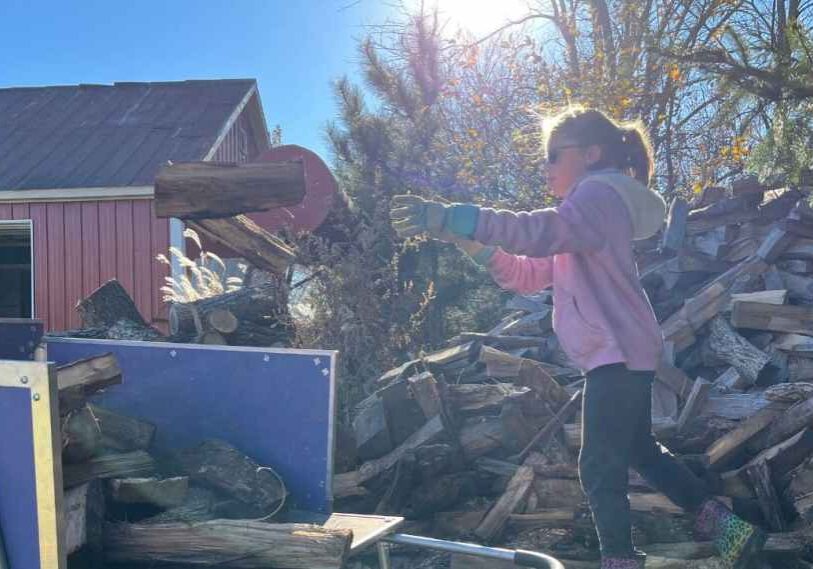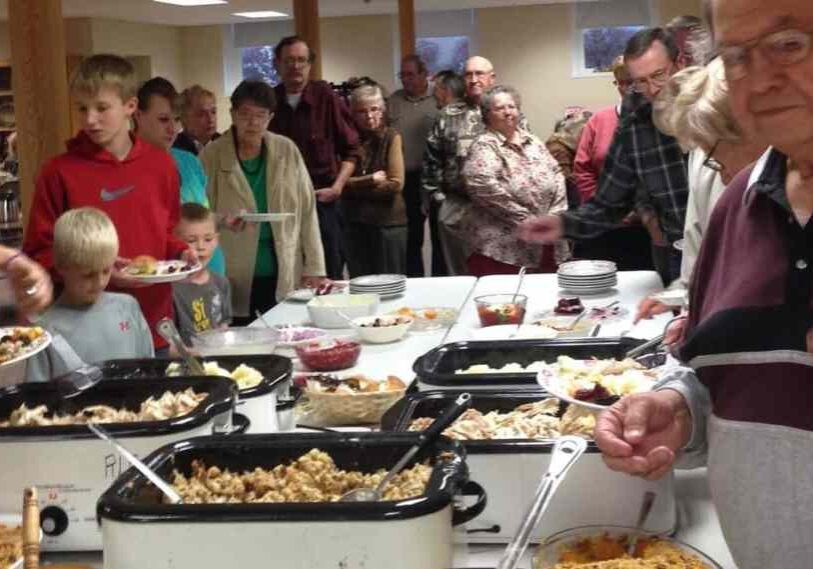Essay | Harvest, Death and Life

CANTON TOWNSHIP, FILLMORE COUNTY — As a person who gardens for beauty as well as fresh food, I often find myself thinking about what a particular crop plot will look like, even as I’m gathering in the harvest.
Some harvests leave little trace, as berry bushes and fruit trees stay alive for years to come. Annual peppers, tomatoes, cucumbers and pole beans can keep on growing to produce more harvests, until frost kills them. Yet most harvests immediately signify the death of the plants. After gathering in onions, garlic, fennel, celery, carrots, potatoes, lettuce and spinach, you have essentially killed the plants. The garden has given its all. All that remains is fodder for the compost pile.
After the springtime of planting and summer of nurturing, harvest is the time of killing. I welcome this part of the practice of gardening. My harvest of good food to sustain my family is sudden death to some plants, and the inevitable fall frosts will take care of the rest. In a garden, we are intimately connected to both life and death.
Indeed, the everyday presence of death imparts a consciousness to a gardener that is often absent in the modern world. Society has specialists—police, doctors, morticians, packing plants, tree surgeons—whose job is to quickly remove from sight dead and dying people, animals, and plants.

The vines start to die away leaving squash to cure and harden on the ground.
I suspect such squeamishness about death may sometimes be part of the vegetarian movement. An understandable desire to avoid causing animal death leads some to eschew meat. Yet ripping carrots and onions out of the ground, or hacking corn and grain off at the neck, is also a sort of violence. Ultimately, we cannot escape our impact on the world. Our well-being is partly dependent on the pain and death of plants and animals.
But life inheres in death, and death is part of life. What we eat feeds our lives. Annuals bequeath seeds, some like dill, cilantro and poppies scattered around to become next year’s weeds, and others like spinach and pole beans carefully stored in a seed box for next year. Spent vines and leaves cycle back into the soil as they rot either in the compost bin or in a layer of mulch over the soil, feeding the bugs and fungi that will make soil for next year’s plants.
Being intimately involved with farming and gardening surrounds us with evidence of death. It throws things into perspective. We recognize our own mortality. We realize something could happen to any living being at any moment. We cherish the mystery and are grateful to participate in it.
A good life includes an awareness of death. It forces us to properly value today’s pleasures and experiences, and hope that our life and inevitable death might somehow serve life’s purpose, just as the plants and animals that feed us do.

Cucumbers are some of the first plants to show their end of cycle.
Gardens teach us about the gifts of life, but also the lessons of loss as well. The poet Ruth Haley Barton says it well in her poem Fall Garden:
Fall Garden
By Ruth Haley Barton
In fall
the garden is spent
having given its all.
Cucumber vines lie exhausted on the ground
Tomato plants list to one side
Cornstalks stand dignified and empty
Sunflower faces droop earthward,
shades of their former selves.
All that has not been claimed lies moldering in the dirt—
a bruised tomato, a forsaken pepper…
a misshapen pumpkin, a trampled stalk of beans.
What came from the earth is returning
to the place from whence it came.
There is an intimacy here,
in the fall garden,
gazing at living things in their demise.
I want to avert my eyes, avoid this tender grief.
Is this life or is this death? I cannot tell.
Ah, but there is beauty here
amid all this death and dying.
To have given one’s self fully
at least once
that is the thing.
To have spent oneself in an explosion of color
to have offered one’s body for food,
one’s very soul for nourishment…
It is an unseemly generosity,
beauty of another kind.
In fall
the garden says, “This is my life, given for you.”
And we are fed.






